Seeing your baby take their first steps is such an incredible moment.
It marks the start of a new stage in their development - that change from baby to toddler.
In the excitement, it’s the most normal thing in the world to want to race out the door and start browsing baby shoes for them. But there is no need for your baby’s first pair of shoes, just yet.
Here are our top seven tips for buying your baby their first pair of walking shoes…
1. Don't buy your baby’s first shoes the minute they start walking
After your baby takes their first, exciting, wobbly steps, you may think you need to race out and buy a pair of baby shoes for them straight away, but you don’t. It’s a while yet before you need to start searching for ‘baby’s first shoes’ online.
Babies benefit from having bare feet for a while when they’re first learning to walk. They need to be able to feel everything and wiggle their toes.
Walking shoes at this point will just create an unnecessary barrier between them and the ground. It will make it more difficult for them to grip and learn how to balance themselves in this whole new way.
But while they don't need walking shoes yet, little feet can do with some extra protection from cold or rough surfaces. Pre-walkers for girls or boys are the perfect option in this case. They are soft and light enough to allow your baby freedom and flexibility but they give feet a little extra barrier to protect little soles and toes from injuries.
At this stage of development, just focus on letting your baby find their balance and their confidence. (And don’t forget to baby-proof everything! Now that they’re standing, a whole new world of hazards will be within their reach.)
2. Watch for signs that your baby is ready to move on
Each baby's development is unique and the age at which their walking skills develop can differ. Most toddler's first steps happen between the ages of 7 and 18 months. And after that, it can take a while for them to build the confidence to walk unassisted.
So how long should you wait after they've taken their first baby steps?
There is no definite amount of time, or single answer for this question. It depends on your child. The best advice is to wait until your toddler is walking unaided for a lot of the day. This is the point at which their feet will start to need the extra support that first walking shoes can give them.
Once you’ve reached this stage, they'll be ready to move on from their pre-walker shoes and it's time to invest in their first set of baby walking shoes.
3. Choosing the right fit
So now that you know they’re ready to move on, how do you choose the right walking shoe? It can be daunting. The easiest thing is to break down exactly what you need. And once you’ve got your list clear, it all becomes a little more fun, as you choose the style and design that you most prefer.
The single most important thing to watch out for is choosing the right fit. We all know fit is important for a shoe. Many of us know the discomfort of a tight fighting shoe… the digging into your foot, the distracting and painful rubbing and the cramped toes.
But when it comes to your baby's feet, a bad fit can be less obvious. At this stage your toddler's nerve ending may not be completely developed. This means that if the shoes are uncomfortable they may not feel it.
And even if your toddler can feel it, they're also just developing their communication skills and can find it difficult to let you know what's wrong.
Make sure you have your baby’s feet measured before you start shopping. You need to know the width as well as the length. And, if you can, try and measure your baby’s feet in the afternoon.
Most babies’ feet will swell during the day, so if you measure them first thing in the morning, you may get a slightly smaller measurement than they need. The Society of Chiropodists and Podiatrists recommend that a new shoe should be approximately 12-16mm longer than the longest toe.
4. Choosing the right shoe type and support
Flat feet are normal for toddlers, so there is no need to worry about arch supports. You should avoid any high ankle shoes, as toddlers’ ankles should be kept free to avoid accidental injuries and help them build muscle strength.
The best shoes for walking babies are ones that are as lightweight as possible and give your baby’s feet support and flexibility. The soles should be flexible and non-slip to give them the best grip possible on the ground. Apart from that, it’s up to your own individual preference.
Browse the selections of baby shoes online and decide whether you’d like a closed shoe style, a sandal style, a casual style or a formal style. Just make sure that the shoe shape follows that of your child’s foot – a wide front with a narrower heel.
5. Choosing the right materials
Avoid cheap materials. It’s so important that your child’s feet can breathe. For the best first walking shoes, look for breathable linings and upper shoes made from the softest, high quality leather, which will mould to their feet contours.
Without proper breathable materials, your child’s feet will sweat in the shoe and they won’t dry out properly. This can lead to foot health issues like athlete’s foot.
6. Velcro, straps or laces?
When choosing the type of fastener, there are a few options. All of which have different benefits and strengths.
-
How secure is the fastener?
Whether you go for Velcro, straps or laces, just make sure that your fastener is supporting your baby’s position in the shoe. Good support will ensure that they’re not having to curl their toes to keep the shoes on properly. -
How much flexibility do they have?
Make sure you can easily tighten and adjust fasteners to create the perfect fit for your child. And watch out for their heel slipping out of the shoe when they’re walking. -
How easy does it make getting shoes on and off?
A Velcro strap makes putting on and taking off shoes a breeze and is great for busy parents. But don’t forget, it’s also the easiest fastener for your child to open themselves. If your baby likes to wriggle out of their shoes or kick them off, these may not be the best option for you.Buckle straps and laces are a little slower to get on and off, but they can be easier to keep on during the day. Just make sure that your laces are long enough to tie a double knot so that they don’t come undone and act as a trip hazard during the day.
7. Knowing when to move up a size
Babies feet grow quickly. And it’s recommended you remeasure your toddler’s feet every 6 to 8 weeks. According to the Society of Chiropodists and Podiatrists, each year your baby’s feet can grow by at least two sizes until they hit four years of age. After that, it should slow down to one size per year.
But growth is not always even. Some babies’ feet can grow faster than others and they can go through periods of intense growth spurts. You should always be keeping an eye on how their shoes are fitting, watching out for any sign of trouble.
Some easy checks you can do…
The easiest thing to do is to make it a habit to automatically check the fit when you’re putting on or taking off your toddler’s shoes. Once they are on, simply press down on the front of the shoe when your child’s standing and check that there is still roughly a half an inch between their big toe and the tip of the shoe.
Another easy way of checking is to make sure that you can comfortably fit your little finger into both the heel and area where the shoe meets the ankle when your toddler’s shoes are on. If you can’t, it means the shoes are no longer allowing enough room for your baby’s feet. And it’s time to get remeasured and consider moving up a size.
Some problems to watch out for…
Remember, the bones in your child’s feet are still developing at this stage. The Society of Chiropodists and Podiatrists recommend replacing shoes that have 5mm or less between the big toe and front of the shoe. They also recommend looking out for the following 4 warning signs of issues with your child’s feet:
- Redness on the skin – look for redness or rashes between toes, around the arches and ankles or any lumps on the soles of feet.
- Nail problems – watch out for any inflammation or discolouration of toenails.
- Deformed toes – make sure toes are always in a straight line with the foot and not curled back. It’s normal for the fifth toe to tuck under the fourth toe, or fourth toe to tuck under the third, but make sure the big toes are straight.
- Posture – watch out it your child’s feet look excessively turned in or out.
And don’t forget, most importantly of all, to have fun!
Once you know all the things to watch out for, buying your baby’s first pair of walking shoes is fun and marks an exciting new stage in them growing up.
Go to stores that specialise in high quality baby shoes for boys or girls and have fun selecting the colour, style and finish you want. Think about the time of year and any special occasions you might have coming up and choose a shoe that works for you.
Then sit back, relax and enjoy this very special time with your active little toddler.
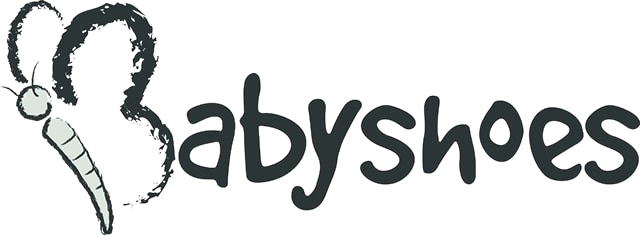

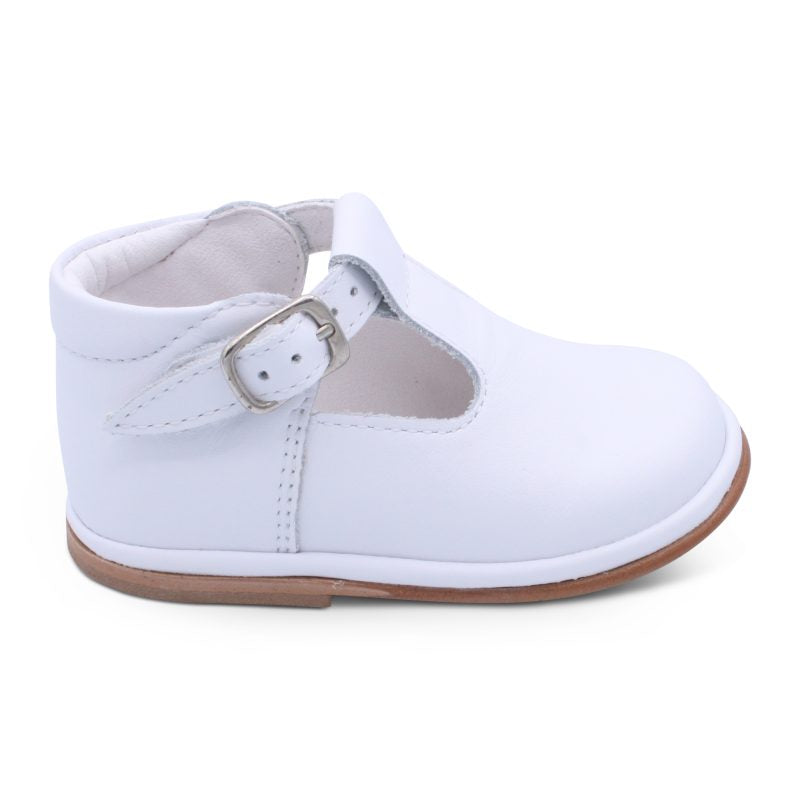
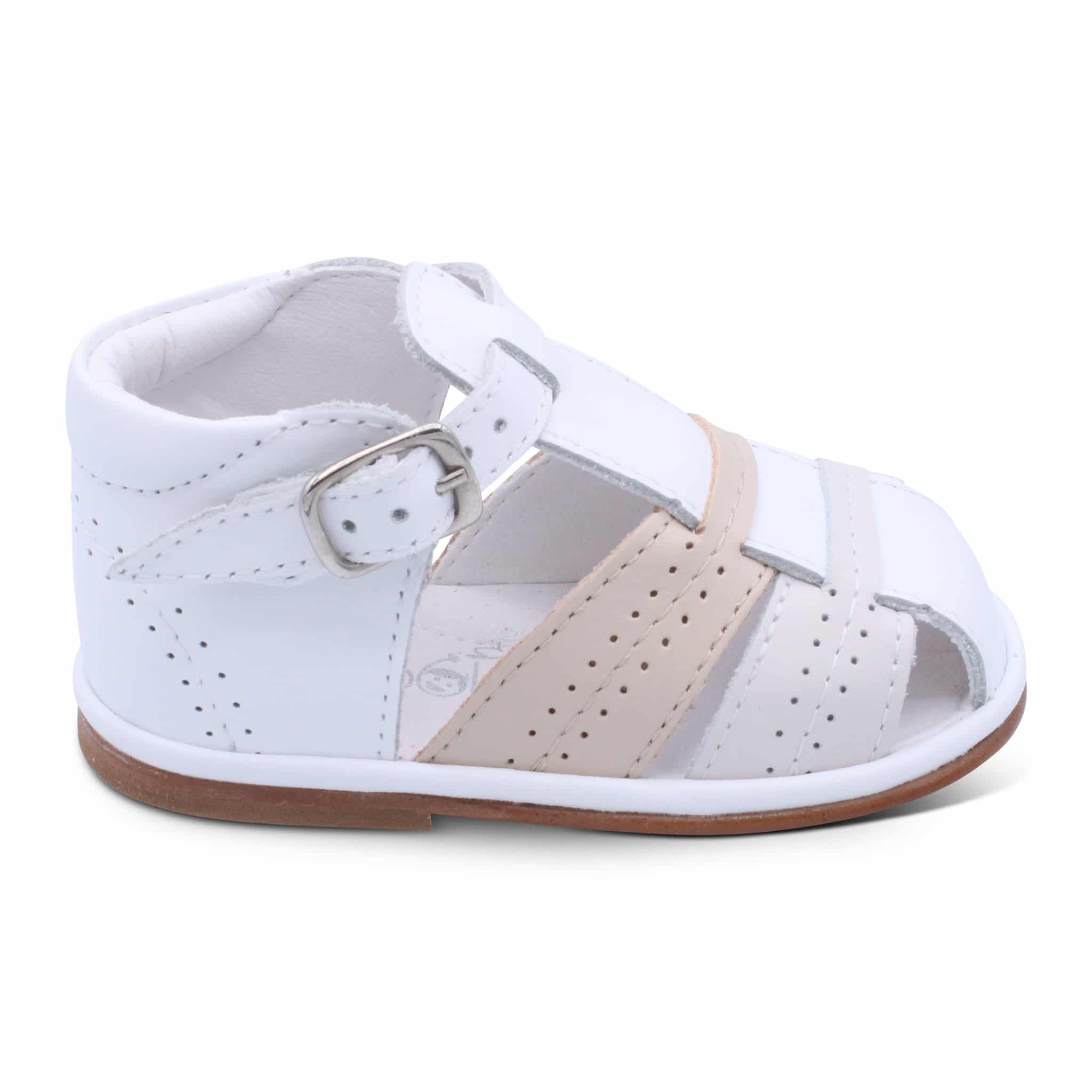
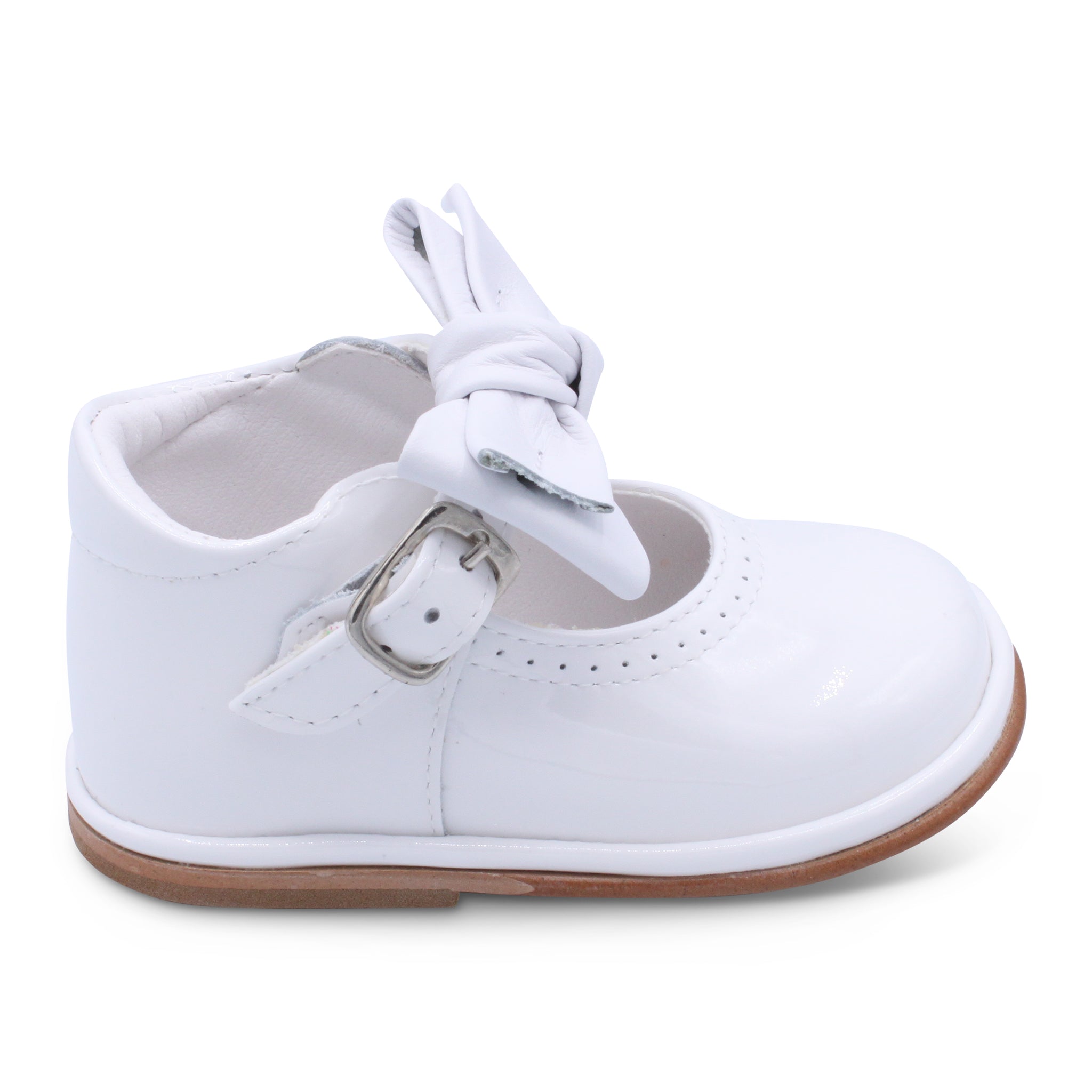
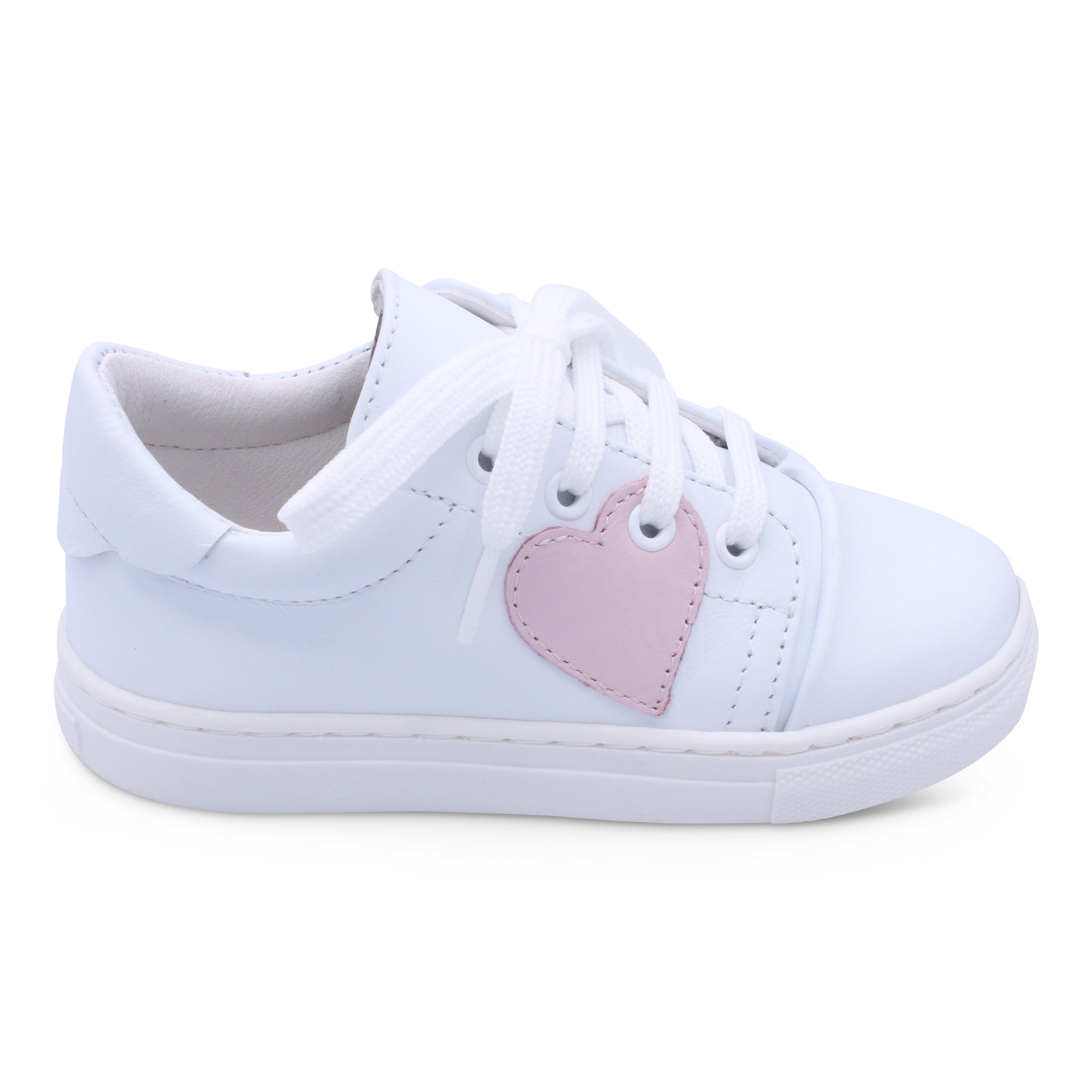

Leave a comment
This site is protected by hCaptcha and the hCaptcha Privacy Policy and Terms of Service apply.